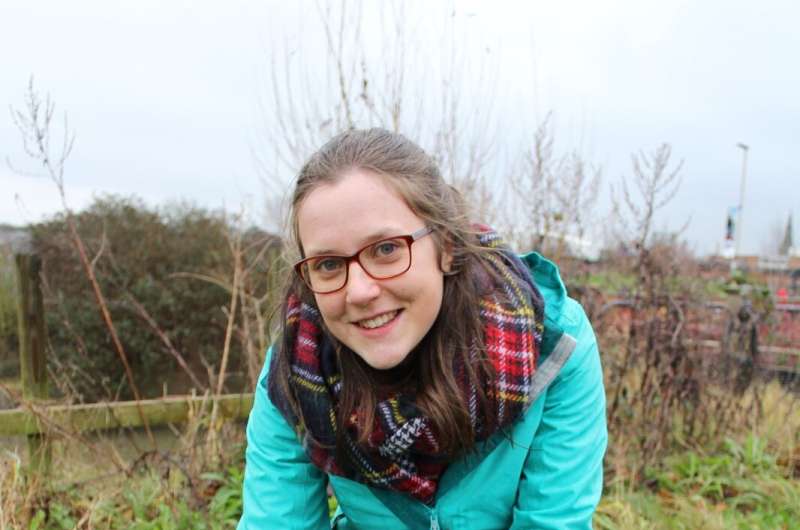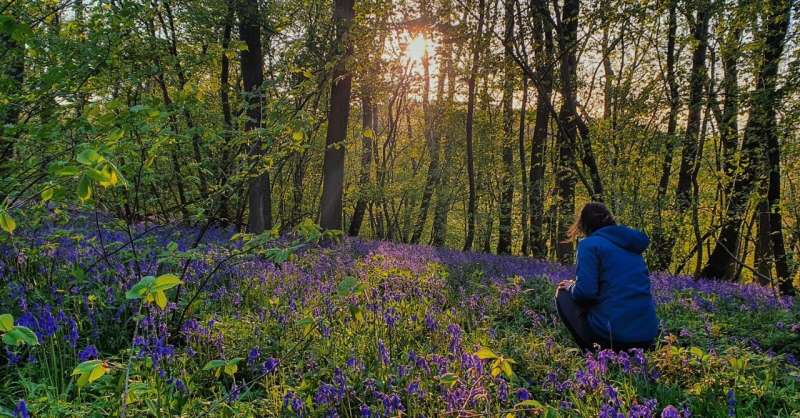Survey shows more wildflowers in bloom during January than ever before

A record number of wildflowers were found to be in bloom this winter, according to a new survey by the Botanical Society of Britain and Ireland.
The tenth New Year Plant Hunt saw more than 1,800 plant-lovers across the UK visit local countryside to record all manner of flora, including more new species than in previous years.
The project ran between January 1 and January 4, and helps botanists establish a clearer picture of how wildflowers are responding to changes in autumn and winter weather patterns.
Coronavirus restrictions meant that large hunts had to be canceled, but smaller groups still took part and recorded a vast and varied number of species.
Loughborough Ph.D. Geography student Ellen Goddard, a BSBI committee member, was responsible for analyzing the results. A full report has been published on the BSBI website.
The report found:
- 710 different plant species were recorded in bloom across Britain and Ireland compared to 615 last year and 627 in 2019
- A total of 21,419 records were submitted: almost 50% more than last year
- 1,195 lists were submitted, compared to 798 in 2020 and 712 in 2019
- 1,811 people participated, either individually or as part of small family groups and support bubbles—usual large group hunts were all canceled due to COVID-19
- Plant hunters joined in from Orkney to Guernsey, from Anglesey to Norfolk, and from Donegal to south west Cork.
This year was Ellen's fourth year taking part in the annual hunt.
She said: "Wildflowers are crucial for our insect pollinators, providing them with nectar and pollen as food.
"We are seeing fluctuations on the number of wildflowers flowering over the New Year that appears to be linked to changes in weather patterns, with warmer temperatures leading up to the New Year having a higher number of species flowering.
"Changes in flowering times may influence how well our pollinators do, as traditionally insects emerge alongside key flowering species.
"Further research is needed to see if we are seeing the same shift in pollinator emergence as we are seeing in flowering plants."
The report found, as expected, that the milder south and west of Britain and Ireland had the highest numbers of species in flower—which was 86 on Jersey.

This is less than the 2020 total of 115 species in Swanage and almost half the 2016 top total of 162 species recorded in Berkshire.
Ellen said: "2021 has been a recording breaking year, with more species recorded in bloom and more lists submitted than ever before, but we are still seeing the same split of native vs non-native plants.
"We have also seen a change in the way people took part in the hunt this year, with organized group hunts canceled due to COVID-19 restrictions, people have been going out on their own or in small family groups and support bubbles.
"This has led to a small increase (c5%) in the number of participants but a marked increase (45-50%) in total lists and records submitted.
"This is likely to have played a large part in the higher number of species recorded this year, but there was also a higher temperature anomaly than we saw in 2020.
"So, the COVID-19 restrictions may have influenced how people took part in the hunt, but the warmer weather in the period leading up to the hunt could have also influenced the total number of species and the number of records we received."
The main findings from this year's data were:
- 53% of the flowering species reported were of plants which normally flower after midsummer and had managed to carry on flowering. These include "Autumn Stragglers' such as Yarrow, Ragwort and Hogweed. This proportion is very similar to previous years
- Only 24% were "Springtime Specialists' like Primrose and Lesser Celandine, so there is no indication of an early spring. This proportion is similar to previous years
- 23% of the records submitted were of species we might reasonably expect to flower at New Year, or species which we cannot easily be categorized as either 'early' or 'late." These include typical "All Year Rounders' such as Shepherd's-purse as well as "Winter Specialists' such as Winter Heliotrope
- The top four most frequently seen species were Daisy, Groundsel, Dandelion and Annual Meadow-grass—this was identical to last year's list and all (native) plants that we would expect to be flowering at this time of year
- Smooth Sow-thistle moved into fifth position on the Top Twenty list of most frequent plants, replacing Common Chickweed which moved to number 14 on the list
- Bramble and Nipplewort entered the Top Twenty replacing Winter Heliotrope and Ivy
- 36% of species recorded were non-natives (aliens). This includes plants from warmer climates that have escaped from gardens or cultivation, become naturalized in the wild and were able to extend their flowering into the winter months
As in previous years, urban areas tended to have more non-native species in flower than rural areas, as there are more sheltered and disturbed places with warm microclimates where alien plants can thrive.
Kevin Walker, BSBI Head of Science, said: "As Ellen's analysis of the New Year Plant Hunt shows, our plants are responding to changing weather patterns, with more flowers being recorded during the
past decade as we experience autumns and winters with warmer temperatures and fewer frosts.
"We cannot, however, prove conclusively that more species are flowering nowadays in mid-winter compared to in past years.
"We can't say for sure yet what impacts these changes in flowering times will have on associated wildlife—but we can see that weather patterns are changing and our plants, both native and non-native, are responding."
Provided by Loughborough University





















